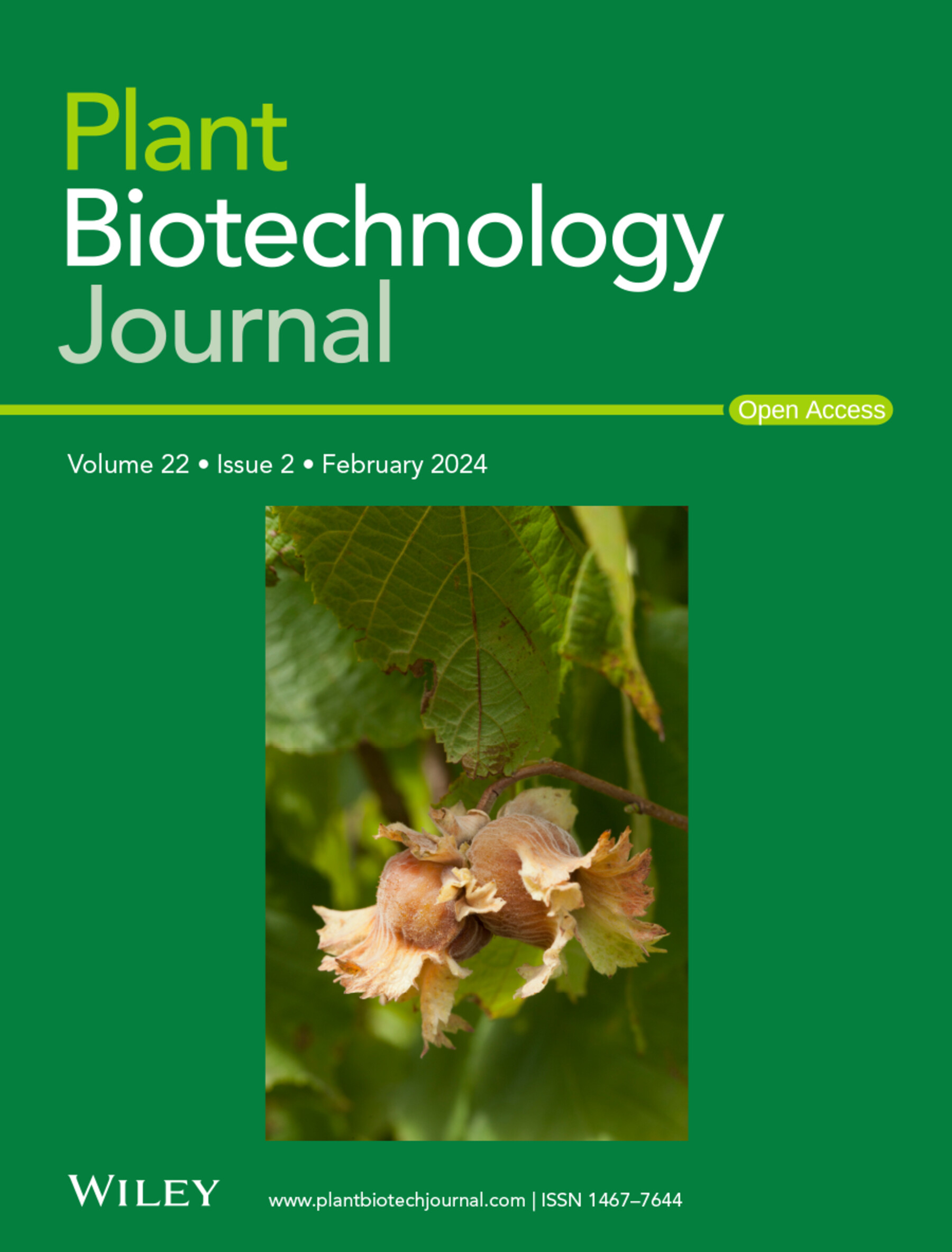Resistance to the herbicide metribuzin conferred to Arabidopsis thaliana by targeted base editing of the chloroplast genome
IF 10.1
1区 生物学
Q1 BIOTECHNOLOGY & APPLIED MICROBIOLOGY
引用次数: 0
Abstract
The chloroplast genome has considerable potential to enhance crop productivity, but it remains underutilized in breeding because it is difficult to modify. This study elucidates the potential of recently developed chloroplast-targeted C-to-T base editors in facilitating the use of the chloroplast genome for crop breeding. The herbicide metribuzin interferes with photosynthesis by binding to the D1 protein of photosystem II, encoded by the chloroplast genome. Naturally occurring D1 mutants with V219I or A251V substitutions are known to have resistance to some herbicides including metribuzin. Here, using the base editors, we introduced these substitutions and showed that the A251V single mutation and the V219 & A251V double mutations conferred significant metribuzin resistance to Arabidopsis thaliana. The V219I & A251V double mutants exhibited increased metribuzin resistance and grew better than the A251V single mutants. Furthermore, the double mutants grew as well as wild-type plants in the absence of metribuzin. The single and double mutants, which are a challenge to obtain through traditional mutagenesis and crossbreeding methods, can be relatively easily generated using C-to-T base editors. In view of the conservation of V219 and A251 across numerous species, C-to-T base editing can potentially confer metribuzin resistance to a wide range of crops. Compared to nuclear genes, chloroplast genes are also less likely to spread into wild populations. Our findings suggest that chloroplast-targeting C-to-T base editors will find many roles in future crop breeding efforts.通过叶绿体基因组定向碱基编辑赋予拟南芥对除草剂嗪草酮的抗性
叶绿体基因组在提高作物产量方面具有相当大的潜力,但由于其难以修改,因此在育种方面仍未得到充分利用。本研究阐明了最近开发的叶绿体靶向 C-T 碱基编辑器在促进叶绿体基因组用于作物育种方面的潜力。除草剂嗪草酮与叶绿体基因组编码的光系统 II 的 D1 蛋白结合,从而干扰光合作用。众所周知,天然存在的具有 V219I 或 A251V 取代的 D1 突变体对包括嗪草酮在内的一些除草剂具有抗性。在这里,我们利用碱基编辑器引入了这些置换,结果表明 A251V 单突变和 V219 & A251V 双突变可使拟南芥产生显著的抗嗪草酮性。与 A251V 单突变体相比,V219I & A251V 双突变体表现出更强的抗嗪草酮能力,并且生长得更好。此外,双突变体在没有嗪草酮的情况下与野生型植物一样生长良好。通过传统的诱变和杂交方法很难获得单突变体和双突变体,而使用 C 到 T 的碱基编辑器则可以相对容易地产生单突变体和双突变体。鉴于 V219 和 A251 在众多物种中的保守性,C-to-T 碱基编辑有可能使多种作物具有抗甲ribuzin 的能力。与核基因相比,叶绿体基因也不太可能扩散到野生种群中。我们的研究结果表明,叶绿体靶向C-to-T碱基编辑器将在未来的作物育种工作中发挥许多作用。
本文章由计算机程序翻译,如有差异,请以英文原文为准。
求助全文
约1分钟内获得全文
求助全文
来源期刊

Plant Biotechnology Journal
生物-生物工程与应用微生物
CiteScore
20.50
自引率
2.90%
发文量
201
审稿时长
1 months
期刊介绍:
Plant Biotechnology Journal aspires to publish original research and insightful reviews of high impact, authored by prominent researchers in applied plant science. The journal places a special emphasis on molecular plant sciences and their practical applications through plant biotechnology. Our goal is to establish a platform for showcasing significant advances in the field, encompassing curiosity-driven studies with potential applications, strategic research in plant biotechnology, scientific analysis of crucial issues for the beneficial utilization of plant sciences, and assessments of the performance of plant biotechnology products in practical applications.
 求助内容:
求助内容: 应助结果提醒方式:
应助结果提醒方式:


